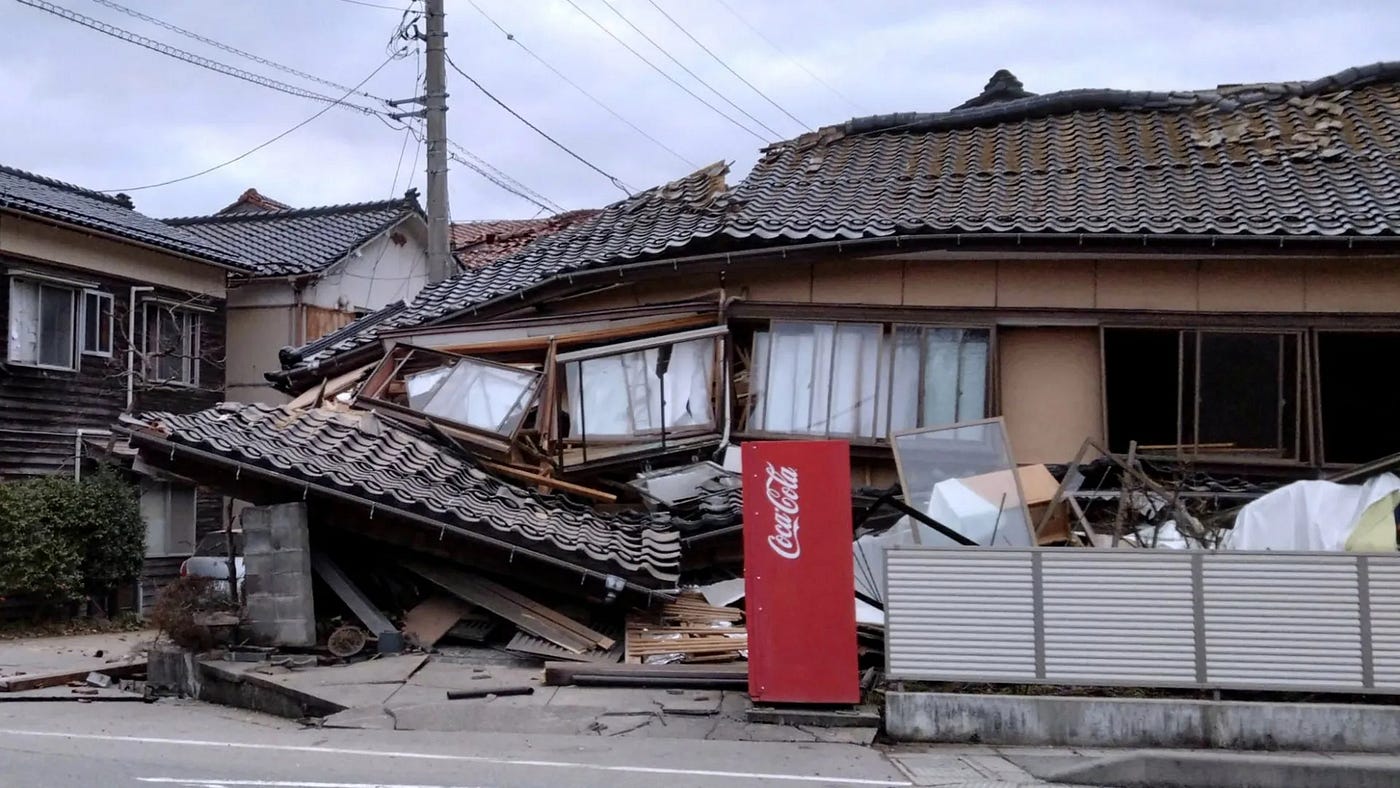Uncategorized
Resilient Japan Faces the Aftermath: Unity and Preparedness Shine Amidst Quake Devastation
In the wake of a series of powerful earthquakes that struck western Japan, the nation is grappling with the aftermath as rescue efforts intensify to save those feared trapped under the rubble. At least 62 lives have been claimed by the disaster, with dozens more seriously injured, according to Ishikawa Prefectural authorities.
The temblors, including a magnitude 7.6 quake that rattled Ishikawa prefecture, continue to trigger aftershocks, keeping the region on high alert. Water, power, and cell phone services remain disrupted in some areas, amplifying the challenges faced by residents who are uncertain about their future.
Amid the chaos, stories of resilience and unity emerge. Prompt public warnings, disseminated through broadcasts and phones, coupled with the swift response from the public and officials, have played a crucial role in limiting the extent of the damage. The Japanese, no strangers to seismic activity due to their geographical location along the “Ring of Fire,” have demonstrated preparedness with evacuation plans and emergency supplies.
Toshitaka Katada, a disaster specialist from the University of Tokyo, commended the Japanese people for their readiness, emphasizing that their prior experience with earthquakes has instilled a unique level of disaster preparedness. “There are probably no people on Earth who are as disaster-ready as the Japanese,” he remarked.
The death toll includes 29 in Wajima city and 22 in Suzu, with concerns about additional victims still trapped beneath debris. Japanese military forces, comprising 1,000 soldiers, have been deployed to the disaster zones to aid in rescue efforts.
Aerial footage from Japanese media reveals widespread damage, with landslides blocking roads, boats tossed in waters, and a fire reducing a section of Wajima city to ashes. Despite the destruction, nuclear regulators report that several nuclear plants in the region are operating normally, alleviating fears of a repeat of the 2011 incident that led to a nuclear meltdown.
While the Japan Meteorological Agency issued and later downgraded tsunami warnings, the waves caused significant damage, leaving a muddied coastline and half-sunken ships in their wake. Evacuated residents sought refuge in auditoriums, schools, and community centers, highlighting the communal spirit in times of crisis.
Australian Prime Minister Anthony Albanese, alongside global leaders like President Joe Biden, expressed solidarity with Japan, offering support for their recovery efforts. As the nation grapples with the aftermath, the focus remains on rescue operations, rebuilding, and addressing the challenges that lie ahead, underscoring the indomitable spirit and resilience of the Japanese people in the face of adversity.













